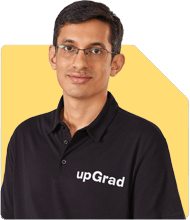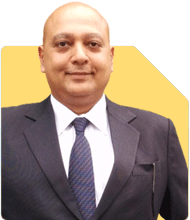I am 43 years old with a monthly income of 90,000. I have two lakhs in mutual funds and 5 lakhs in an emergency fund. I've been told I might need a critical surgery in the next year, which could cost 5 to 7 lakhs. I also have an outstanding personal loan of 10 lakhs. I have critical cover worth Rs 5 lakhs. How can I financially prepare without derailing my long-term plans?
Ans: At age 43, it’s good that you have started preparing. You have regular income, some mutual fund savings, and an emergency fund. You also have some insurance coverage. But you face a big medical cost ahead. Let’s plan how to prepare wisely.
Understanding Your Current Situation
You earn Rs. 90,000 every month.
You have Rs. 2 lakh in mutual funds.
You hold Rs. 5 lakh in an emergency fund.
You have a Rs. 10 lakh personal loan outstanding.
You may need a surgery costing Rs. 5 to 7 lakh next year.
You have a critical illness cover of Rs. 5 lakh.
Your Financial Strengths
You have a stable income.
You have already created a Rs. 5 lakh emergency fund.
You have Rs. 2 lakh in mutual funds.
You have a critical illness cover. This is very important now.
You are aware of the challenge ahead and want to prepare.
Key Challenges You Are Facing
A major health cost is coming up soon.
Your insurance may not fully cover the surgery.
You have a big personal loan of Rs. 10 lakh.
Your long-term financial plans could be affected.
You must manage surgery, loan, and future goals together.
Step-by-Step Financial Action Plan
Let us now go step-by-step to protect your future.
Step 1: Understand the Medical Cost Clearly
Confirm the estimated cost from a reliable hospital.
Ask for written cost estimates in advance.
Know what part insurance will cover.
Also ask about cashless facility or reimbursement.
Get clarity now. Don’t wait for emergency time.
Step 2: Check Your Insurance Policy in Detail
Review your Rs. 5 lakh critical illness cover.
Know exactly what conditions it covers.
Know when and how the payout happens.
Make sure the cover includes your expected surgery.
Inform the insurer in advance if possible.
Step 3: Prepare Your Emergency Fund for Surgery
You already have Rs. 5 lakh in emergency fund.
Keep this money fully liquid now.
Shift it to a savings account or short-term FD.
Don’t invest this in mutual funds now.
If insurance pays, refill this fund later.
Use this only if cost goes beyond cover.
Step 4: Handle Mutual Funds with Care
You have Rs. 2 lakh in mutual funds.
Do not redeem them now unless needed.
These are part of your long-term savings.
Try to preserve them for future goals.
Redeem only if surgery cost crosses Rs. 7 lakh.
Step 5: Personal Loan – Evaluate EMI Structure
Check your monthly EMI on the Rs. 10 lakh loan.
If EMI is above 30% of income, that is risky now.
Check if loan can be restructured or extended.
Ask bank if you can lower EMI or pause for few months.
But do not take fresh personal loan again.
Focus on surgery first. Then repay loan slowly.
Step 6: Create a One-Year Cash Flow Plan
Calculate all income and essential expenses.
Prioritise medical costs, loan EMI, and basic needs.
Remove all luxury and unnecessary spending.
Build monthly savings for next 10 to 12 months.
This ensures surgery cost is covered without panic.
Step 7: Avoid New Investments for Six Months
Don’t start any new SIP for now.
Don’t invest in new schemes until surgery is done.
Right now, liquidity and protection matter more.
Once recovery is complete, restart investments.
Step 8: Check Health Insurance for Hospitalisation
Critical illness gives lump sum.
But check if you also have regular health cover.
That helps with hospitalisation bills.
If not, plan to buy family floater health cover later.
Don’t buy now. Focus only on surgery first.
Step 9: Increase Income if Possible
Explore ways to earn extra for next one year.
Freelance, part-time or side income can help.
Even Rs. 10,000 extra monthly will ease the burden.
Use this to repay loan or refill emergency fund.
Step 10: Don’t Use Index or Direct Funds
Index funds don’t protect in falling markets.
You need capital safety now, not market matching.
Direct mutual funds give no advice or support.
At this stage, you need regular plans with CFP guidance.
A Certified Financial Planner will manage the risk better.
Emotional mistakes during stress can destroy long-term wealth.
Step 11: Once Surgery is Over, Rebuild Slowly
After recovery, start small SIP again.
Even Rs. 3,000 monthly is fine to begin with.
Increase step by step once cash flow improves.
Create clear goals and timelines with your CFP.
Rebuild emergency fund first, then long-term wealth.
Step 12: Emotional and Mental Preparation
Prepare yourself mentally for surgery and financial stress.
Stay calm and focused.
Discuss clearly with family members now.
Let them also help you manage cash flow.
Clarity reduces anxiety and helps better planning.
Step 13: Prepare for Documentation and Claims
Keep all your reports, bills, and prescriptions in one file.
This helps with insurance claim processing.
Also keep loan EMI statements and salary slips ready.
Maintain a checklist of things to do before surgery.
Step 14: Avoid Emotional Investments Now
Don’t buy gold or property in stress.
Don’t take insurance products that promise returns.
Don’t trust agents promising quick solutions.
Follow only clear, goal-based plans from your CFP.
Step 15: Your Long-Term Plans Are Still Safe
This one year will be tough, but not a disaster.
You are already cautious and aware.
You are not panicking. That is a big strength.
Once this surgery is behind you, new savings can start.
Long-term goals may get delayed, but not destroyed.
Finally
Focus all energy now on health and medical preparation.
Don’t take new risks or invest blindly.
Use your emergency fund and insurance smartly.
Don’t touch mutual fund unless it is absolutely needed.
Reduce expenses and plan EMI carefully.
After surgery, slowly get back to investing.
Follow disciplined steps under guidance of a CFP.
You have the right mindset. Your future can still be secure.
Best Regards,
K. Ramalingam, MBA, CFP,
Chief Financial Planner,
www.holisticinvestment.in
https://www.youtube.com/@HolisticInvestment



















.jpg)
